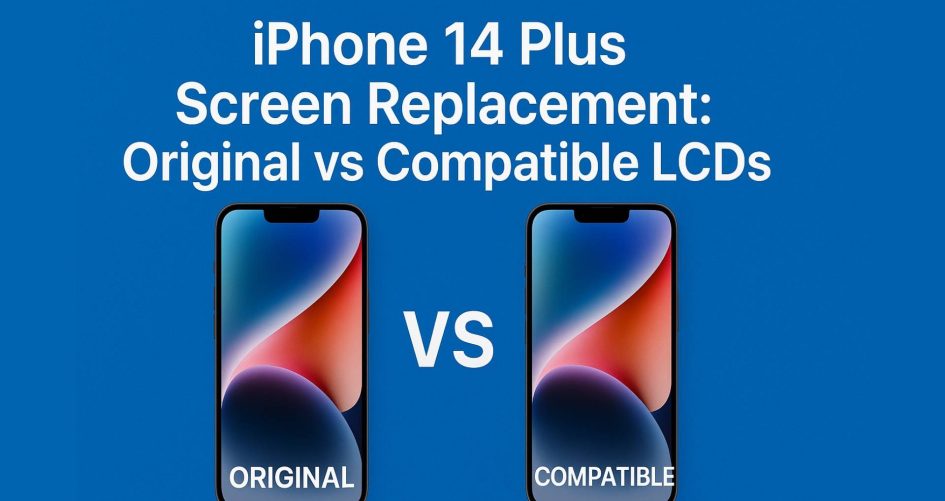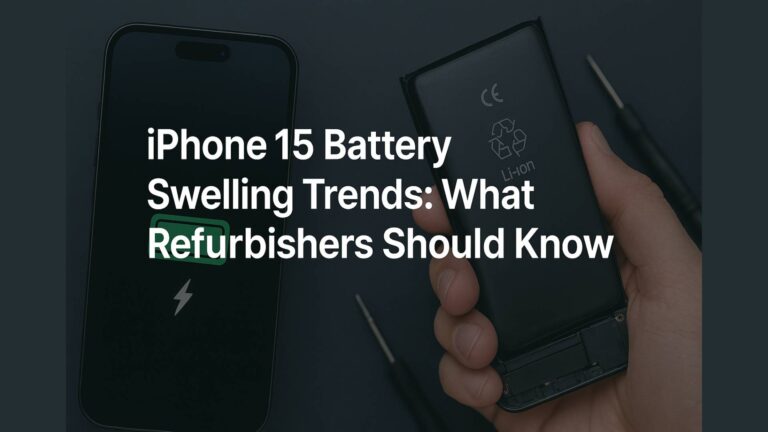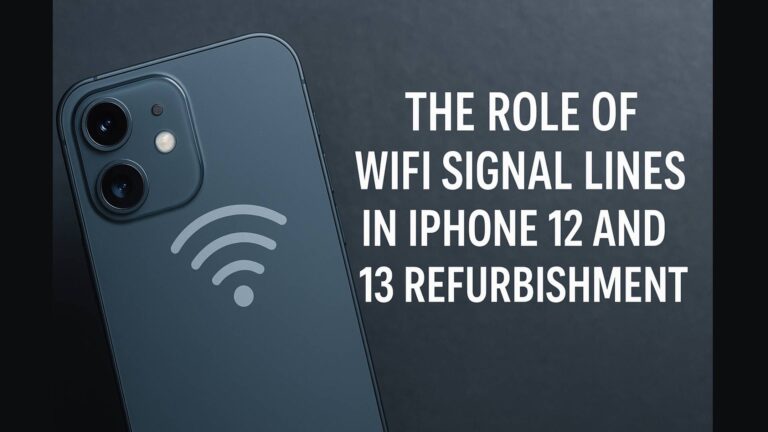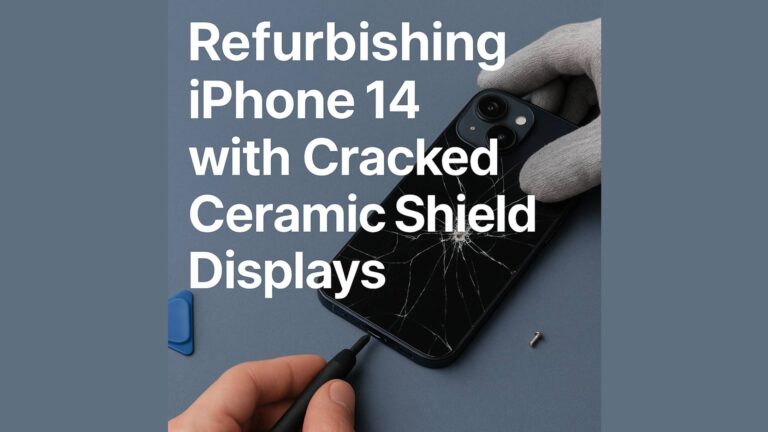In today’s fast-paced world of mobile repairs, choosing the right screen for an iPhone 14 Plus LCD replacement is more crucial than ever. As large screen repairs become common and repair shops strive for cost-efficiency, the debate between OEM vs aftermarket screens continues to spark interest. With the increasing demand for large screen repair, understanding the options available for the iPhone 14 Plus helps consumers and wholesalers make smarter decisions. Know more.
Introduction to iPhone 14 Plus LCD Technology
The iPhone 14 Plus is loved for its stunning 6.7-inch Super Retina XDR display. It offers users a cinematic viewing experience, but this feature comes at a cost—especially if the screen gets damaged. LCD technology in this model is calibrated for color accuracy, sharp contrast, and smooth motion, making it essential to match this standard in any replacement scenario.
Understanding OEM vs Aftermarket LCDs
What Is an OEM LCD?
OEM (Original Equipment Manufacturer) LCDs are screens made by the same manufacturers that produce parts for Apple. These screens are designed to meet Apple’s exact specifications, ensuring top-tier quality and seamless compatibility.
What Are Aftermarket LCDs?
Aftermarket LCDs, sometimes called compatible screens, are produced by third-party manufacturers. They aim to replicate the OEM experience at a lower cost. While some high-end aftermarket options are reliable, many others fall short.
Key Differences Explained
| Feature | OEM LCD | Aftermarket LCD |
| Display Quality | Excellent | Varies |
| Touch Sensitivity | Precise | May Lag |
| Color Accuracy | High | Often Off-Tone |
| Cost | Expensive | Affordable |
iPhone 14 Plus LCD Replacement: Why It’s a Hot Topic
The iPhone 14 Plus’s massive screen makes it more prone to accidental damage. With Apple’s in-store repairs costing hundreds of dollars, users are turning to third-party options. Whether you’re a wholesaler or repair technician, sourcing reliable parts for large screen repair is a priority.
Pros of OEM iPhone 14 Plus LCDs
- Exact Color Calibration – OEM screens are factory-calibrated to deliver vivid and accurate colors.
- True Tone & Brightness Accuracy – OEM LCDs support Apple’s True Tone feature and maintain original brightness.
- Better Touch Sensitivity – With precise digitizers, OEM screens offer the same responsiveness as factory-installed displays.
Drawbacks of OEM LCDs
- High Price Tag – OEM screens can cost 3x more than aftermarket versions.
- Limited Availability – Only authorized dealers can legally distribute Apple-certified screens.
- Compatibility with Third-Party Repair – Using an OEM screen with non-Apple calibration tools may lead to issues.
Advantages of Aftermarket LCDs for iPhone 14 Plus
For wholesalers, compatible LCDs offer:
- Lower Cost – Bulk buyers can save significantly, improving margins.
- Wide Availability – Sourcing from multiple factories is easier.
- Good Enough Quality for Everyday Use – Most users won’t notice subtle differences unless compared side by side.
Disadvantages of Compatible LCDs
Despite their benefits, compatible LCDs do have trade-offs:
- Inconsistent Color Quality
- No True Tone Support
- Reduced Lifespan
These factors can affect the long-term user experience and should be disclosed to customers.
How to Identify OEM vs Aftermarket LCDs
Here’s how technicians can spot the difference:
- Physical Indicators – OEM screens have Apple logos or part numbers.
- Software Checks – Some diagnostic tools can reveal non-genuine parts.
- Serial Number Validation – Original parts can often be verified through Apple’s system.
Impact on Device Performance and User Experience
A subpar screen doesn’t just look worse—it can affect:
- Scrolling smoothness
- App responsiveness
- Face ID sensor alignment
- Battery usage due to poorly optimized brightness
Compatible iPhone 14 Plus LCDs: Are They Safe?
Not all aftermarket LCDs are equal. To ensure safety:
- Avoid ultra-low-cost options with poor build quality.
- Choose screens from reputable manufacturers.
- Insist on thorough testing before shipping to clients.
Refurbished Devices: Do They Use OEM or Compatible Screens?
In the refurbished mobile wholesale industry, cost-effectiveness is key. Most refurbished iPhones use high-quality aftermarket or refurbished OEM LCDs. These parts balance cost, functionality, and customer expectations.
Apple’s Warning Message: A Real Issue?
Installing a non-OEM screen often triggers an “Unknown Part” alert. Although this doesn’t affect basic functionality, it may scare customers. The solution?
- Use compatible screens with programmed EEPROM chips.
- Inform buyers in advance to set proper expectations.
Warranty Concerns for LCD Replacements
- Apple Warranty Voids – Any third-party replacement voids AppleCare.
- Third-Party Repair Policies – Offer your own limited warranty for peace of mind.
- Return and Exchange Issues – Always document the repair process to avoid disputes.
Best Practices for Large Screen Repair
When handling large screen repair tasks:
- Use anti-static mats and gloves.
- Calibrate new screens using trusted software.
- Use strong adhesive to prevent screen lift.
Where to Source Reliable iPhone 14 Plus LCDs
For wholesalers, sourcing is everything. Look for:
- OEM-certified suppliers
- Well-reviewed marketplaces
- Suppliers that offer warranties
Check platforms like MobileSentrix or industry-specific B2B marketplaces.
FAQs About iPhone 14 Plus Screen Replacements
Q1. Is an aftermarket iPhone 14 Plus LCD good enough for daily use?
Yes, high-quality aftermarket LCDs offer satisfactory performance for regular use.
Q2. Will Face ID still work after LCD replacement?
Yes, if the Face ID hardware is undamaged and installed correctly.
Q3. Does replacing the screen void AppleCare?
Yes, AppleCare doesn’t cover third-party repairs.
Q4. How do I know if I’m buying a real OEM LCD?
Look for authorized resellers and verify part numbers.
Q5. What is the average cost difference between OEM and aftermarket LCDs?
OEM screens can be 2-3 times more expensive than aftermarket alternatives.
Q6. Can I wholesale both OEM and aftermarket screens legally?
Yes, as long as you source them from compliant, reputable distributors.
Conclusion: Making the Right Choice
Choosing between OEM and compatible LCDs depends on your budget, quality standards, and customer expectations. For most bulk buyers and repair professionals, premium aftermarket screens strike the best balance between cost and performance. Whether you’re handling individual iPhone 14 Plus LCD replacements or managing large-scale large screen repair, understanding the difference between OEM vs aftermarket parts is essential for success in today’s repair market. Know more.





